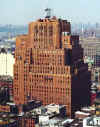 |
New York
Architecture Images-Soho THE WESTERN UNION BUILDING Landmark |
|
|
architect |
Voorhees, Gmelin & Walker | |
|
location |
60 Hudson St | |
|
date |
1928-1930 | |
|
style |
Art Deco | |
|
construction |
This brick ziggurat has decoration motifs influenced by contemporary
European Expressionism. The massive building housed both Western Union
offices and tele-wireless equipment. The entrance lobby is reminiscent of a hall church with the large windows, made of smaller, diamond-shaped pieces, above the entrances. The lobby walls are of orange brickwork and the ceiling is faced with glazed tiles. |
|
|
type |
Office Building | |
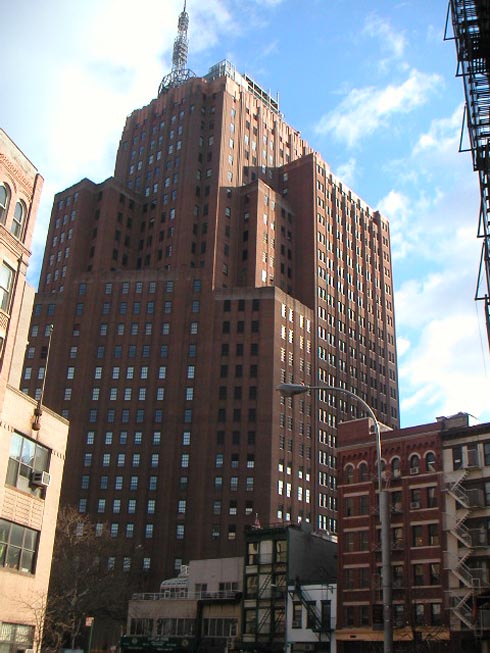 |
||
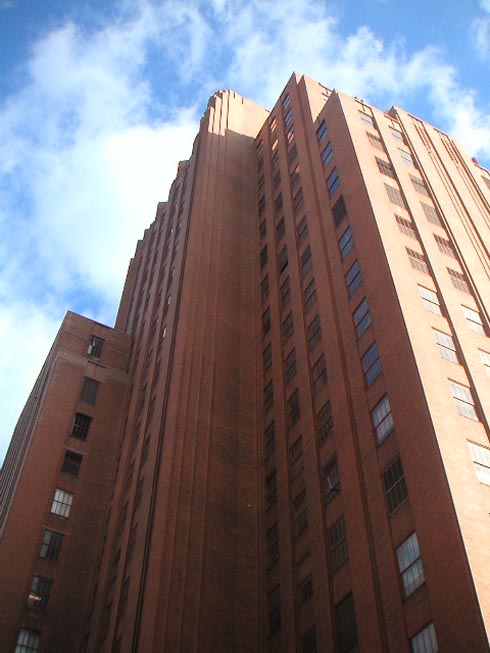 |
||
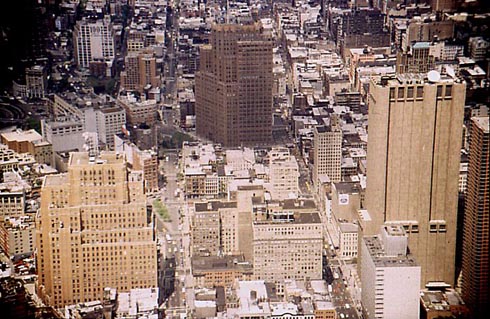 |
||
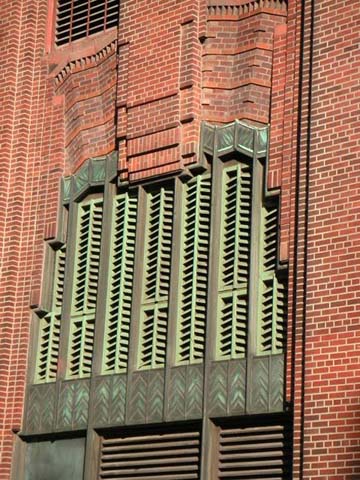 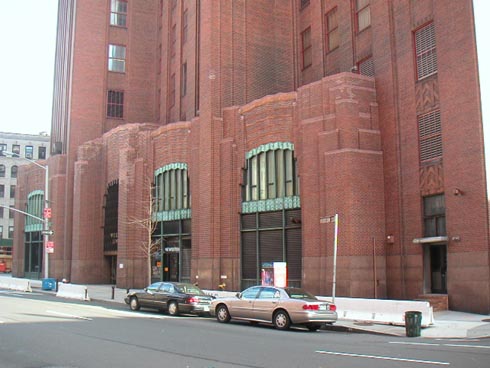 |
||
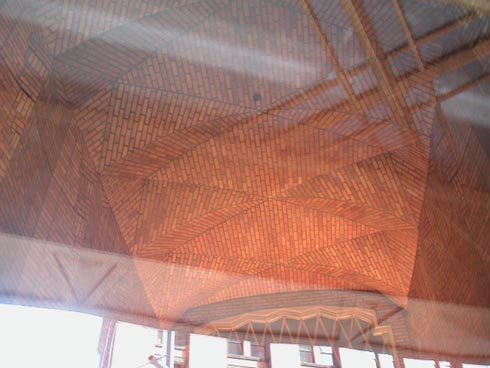 |
||
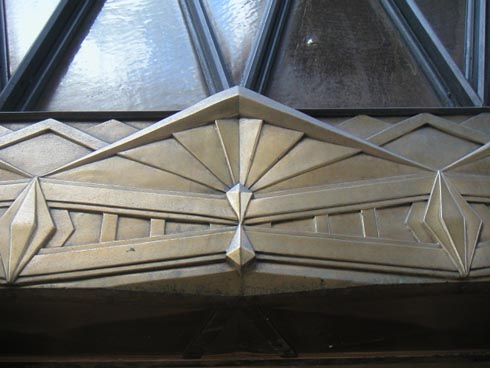 |
||
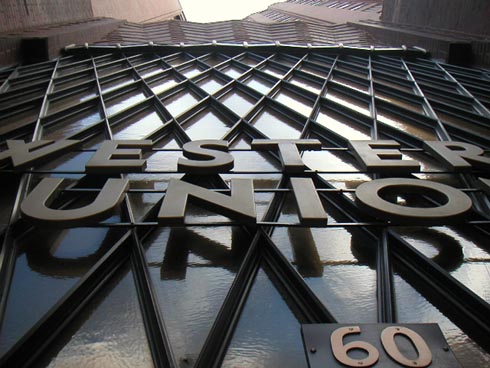 |
||
|
notes |
The
Western Union Building (1930; Voorhees, Gmelin & Walker), at 60
Hudson St., is a noteworthy building by architect Ralph Walker who also
designed the New York telephone Building at 140 west St. just north of the
World Trade Center. When it opened, the Western Union Building housed
telephone, telegraph, and ticker machinery, as well as a messenger service
and classrooms where Western Union messenger boys could continue high
school. Nineteen tones of brick shade the facade from deep red brown at the
bottom to bright salmon at the top. Walk through the lobby to West Broadway.
Finished in brown brick, with recessed lighting and geometrically patterned
brickwork and marble on the floor, the lobby gloriously exemplifies Art Deco
materials and techniques.“60 Hudson St., New York City, New York" *The Premier Communications Hub on the East Coast
Here is a brief cross section of the larger tenants at 60 Hudson today: Qwest, Broadwing,Global Crossing, General Telecom, Cablevision Lightpath, AT&T, Worldcom, TimeWarner Telecom, Gulfnet USA, Wiltel, Primus, GTE - Verizon, Viatel Global Communications, MFN, Cable & Wireless, Intermedia Corp, Teleglobe, VarTec. Volume 16 • Issue 29 | December 16 - 22, 2003
Neighbors raise money for diesel lawsuit
By Albert Amateau Neighbors Against NOISE last week issued
a call to about 300 Tribeca residents for contributions to fund a
lawsuit to force the city’s Dept. of Buildings to prohibit the storage
of diesel fuel above ground level near subway entrances or schools. The group has been demanding for more
than a year that D.O.B. crack down on the former Western Union Building
at 60 Hudson St. across the street from Buckle My Shoe, a pre-school.
Telecommunications firms store what is believed to be thousands of
gallons of diesel fuel for emergency use in their electronic switching
facilities on the upper floors of 60 Hudson St. Norman Siegel, attorney for the
neighborhood group, demanded last month that Buildings enforce the law
that prohibits any above-ground diesel storage within 1,000 feet of the
nearest wall of a building occupied by a school or hospital or within
1,000 feet of an entrance or exit from a tunnel for motor vehicles,
subway or railroad cars. Sixty Hudson St. is midway between the
Seventh Ave. subway stations at Franklin and Chambers Sts. NOISE
(Noxious Odors Incessant Sounds and Emissions) says that both the school
and the subway entrances are considerably less than 1,000 feet from the
building. Siegel said last week that D.O.B. did not respond to his Nov.
17 letter and he indicated that he would file the lawsuit in January. A D.O.B. spokesperson this week said the
1,000-foot rule was part of the fire code and applied only to wholesale
bulk oil storage where petroleum products are offered for sale. “To fund the lawsuit, we need to raise
$50,000 to cover legal fees, research, expert testimony and other
related costs,” said Tim Lannan, president of NOISE in a Dec. 9 e-mail
letter to neighbors. “We have an e-mail list of over 300,” he said in a
telephone interview later. Lannan said that the amount of diesel
fuel stored on some of the upper floors of 60 Hudson St. is in excess of
the amount of fuel stored at 7 World Trade Center. After the Twin Towers
collapsed Sept.11, 2001, a fire, which investigators believe was spread
because of the diesel, led to the collapse of 7 W.T.C. in the afternoon. At a Tribeca forum on diesel fuel storage
last June, Buildings Commissioner Patricia Lancaster acknowledged that
the department was negotiating with the owners of 60 Hudson St. about
possible variances to legalize fuel storage on six floors in excess of
code limits in return for installing fire safety equipment beyond what
is required by law. But NOISE and City Councilmember Alan
Gerson both insist that variances to allow any violations in the
building code are unacceptable. “I met with Patricia Lancaster recently
and repeated our request for some kind of public process regarding any
variances,” said Gerson. The commissioner indicated that she has
submitted the request for public consultation to department lawyers,
Gerson said. “She claims it’s a complicated issue. I can’t see what’s
complicated about it.” Lancaster also told Gerson that the department has engaged Ove Arup & Partners, an international engineering consulting firm based in London, to study the issue of diesel storage variences. The Arup firm last July completed a study, “Building Regulations – Post Sept. 11” for the British government. Robin Forst, a member of Gerson’s deputy chief of staff said last week that Lancaster indicated that the department would not make a final decision on variances for diesel storage rules until Arup completes its study. |
|
|
links |